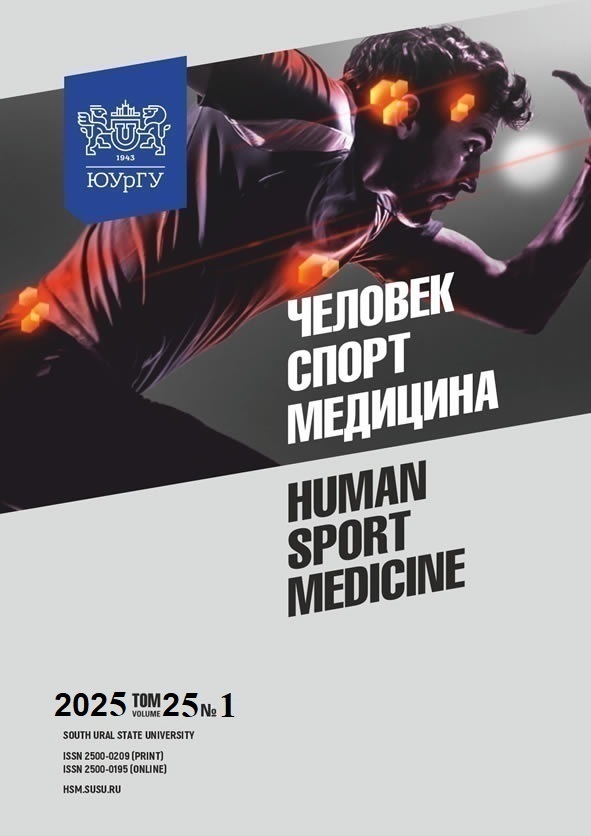FUNCTIONAL ACTIVITY OF STUDENTS STUDYING IN DIVERSE CLIMATIC CONDITIONS
Abstract
Aim: The study aimed to identify the boundaries of functional activity in students residing in different regions during the academic year using the Myznikov Index (MI). Materials and methods. The study comprised 18–19-year-old male students who provided their informed consent. Systolic (SBP) and diastolic blood pressure (DBP) were measured, and pulse pressure (PP) and mean dynamic pressure were calculated. The Myznikov index was derived as MI = (SBP/DBP)xHR. Central hemodynamics was evaluated in students from the Polar University (n = 263) and Moscow universities (n = 262) over the academic year. Results. For Moscow students, the Myznikov Index values during the academic year were 104.14 ± 0.23 (σ = 15.45). Functional activity levels were categorized as follows: extremely low (n = 10; 3.6% of the sample; < 71.14 units; 65.3 ± 0.24), below average (n = 60; 22.14%; 71.14–78.78 units; 83.21 ± ± 0.32), average (n = 166; 63.65%, 78.78–122.49 units; 105.42 ± 0.17), above average (n = 23; 10.33%; 122.70–135.35 units; 125.62 ± 0.35), and extremely high (n = 3; 1.2%; > 138.15 units; 154.34 ± 2.36). For Polar University students, MI values were 100.15 ± 0.85 (σ = 18.196), with functional activity levels categorized as extremely low (n = 3; 0.65% of the sample; < 64.35 units; 70.42 ± 5.23); below average (n = 140; 53.02%; 64.35–82.55 units; 81.11 ± 1.72); average (n = 120; 46.67%; 82.55–118.94 units; 9.32 ± 1.52); above average (n = 2; 0.76%; 118.94–137.14 units; 121.34 ± 1.86); and extremely high (n = 6; 3.7%; > 137.14 units; 139.8 ± 2.73). Conclusion. Students exhibiting extremely low and extremely high functional activity levels demonstrated signs of strain and overexertion, which may predispose them to maladaptation and health disorders.
References
References on translit
Copyright (c) 2025 Human. Sport. Medicine

This work is licensed under a Creative Commons Attribution-NonCommercial-NoDerivatives 4.0 International License.















